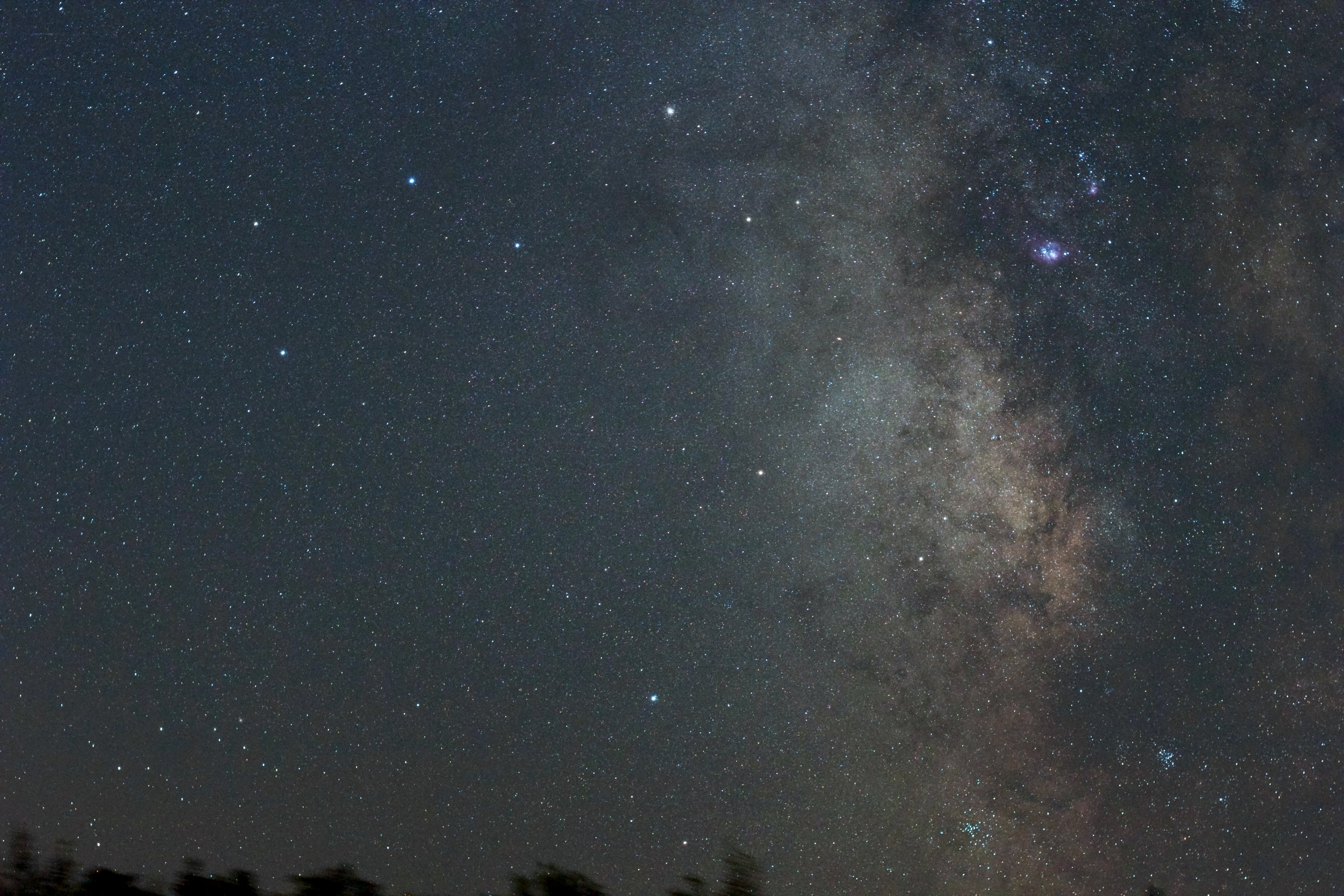Sagittarius hits the mark
/the teapot asterism in the constellation sagittarius stands out low on the southern horison in August. In this image from 2018, the planet saturn hovered above the tip of the teapot. - john mcphee
I'LL ADMIT to a personal bias when I say Sagittarius is one of the most interesting constellations.
My December birthdate puts me under the Archer's influence or at least that’s what astrology buffs will tell you. It's all bunk to me but if I must have an astrological sign, I'll take Sagittarius.
For naked-eye stargazers, it's simply a pretty constellation that hangs low above the southern horizon in the early hours of springtime and in the evening come summer. Most people see a teapot, not an archer drawing back his bow.
If you have binoculars or a telescope, all the better. There are lots of Messier objects in Sagittarius, such as star clusters and glowing patches of dust and gas called nebulae. Messier objects, named for Charles Messier, the 19th century French comet-hunter who catalogued them, all start with M, followed by a number.
For instance, M8, the Lagoon Nebula is the second-brightest nebula in the northern sky after the Orion nebula and also contains a beautiful open cluster of stars.
The Lagoon nebula in the constellation sagittarius is one of the most impressive nebulae in northern skies. The trifid nebula can be seen above the lagoon. - John mcphee
M8 looks best in binoculars or in a telescope using a wide-angle, low-power view. It can be found a short distance to the right of the top star in the teapot's lid. Scan up from the Lagoon to find a much fainter but still interesting nebula called the Trifid.
Head back to the tip of the teapot, look to the left of the star Kaus Borealis and you’ll find another Sagitarrius showpiece: M22, a very dense group of old stars called a globular cluster. Globulars usually appear as just foggy patches in binoculars or small telescopes.
What makes them interesting is that you're seeing way back into time when viewing a globular cluster. They contain hundreds of thousands of old stars that go back to the early years of our galaxy, the Milky Way, billions of years ago.
There are too many clusters and nebulae in the Sagittarius region to go into here. You can get a detailed star chart and track them down, but it's fun just to scan the area with binoculars or a small telescope even if you don't know what you're seeing.
The Summer Triangle, which covers a large part of the sky overhead and slightly to the east in August, also provides fertile stargazing territory.
The triangle is made up of the bright stars Deneb, Vega and Altair, as the star chart shows. The brightest star near the triangle's centre, although it's not all that bright, is Albireo (al-BIR-ee-oh). To find it, look first for Deneb at the top of the cross-shaped constellation Cygnus. Trace a line to the star that marks the base of the cross: that's Albireo. While Albireo is not much to the naked eye, a small telescope should reveal a double star of gold and blue. If Albireo is up, it's usually the first thing I turn to with my scope. It's a wonderful sight.
Frankly, many objects I've viewed in my scope aren't so awe-inspiring.
I knew enough about backyard astronomy before I bought a telescope that I didn't expect to see the colourful vistas found in photographs. A long-exposure photo picks up shades of colour, particularly the deep reds of hydrogen-rich nebulae, that our eye sees as greenish grey.
Not so with multiple stars, particularly those of different colours: they're much more impressive in the eyepiece than in a photo. Some multiple stars are just optical illusions, but most are actually related systems. In fact, astronomers say our star, the Sun, is a relatively rare beast in its lack of companions.
The samll constellation lyra - top right - contains one of the best double star systems for binocular and telescope observers - the double-double. - john mcphee
Another famous double in the Summer Triangle can be found in the small but eye-catching constellation Lyra, the Lyre. Look to the left of Lyra's brilliant star, Vega, and you'll find Epsilon Lyrae.
This star is not only a binocular double; each of the two stars break down into doubles themselves in a telescope larger than 75 millimetres (three inches). Hence, the name astronomers gave to Epsilon Lyrae long before the age of mediocre drive-through coffee - the Double-Double.
You don't need a telescope, and it's best not to use one, to enjoy this month's premiere astronomical event, the Perseid meteor shower. This shower is the most popular of the year, mainly because it occurs in warmer weather and it's possible in some years to see a Perseid every minute. Many are bright with long trails called trains.
It's hard to believe most meteors are mere dust particles that heat up and glow as they enter our atmosphere. A few, of course, are more substantial, large enough to survive their fiery descent. Once they hit the ground, they're called meteorites.
Unfortunately, as with all meteor showers, you must wait until after midnight to see the most Perseids. But this year the moon will have set by the time of the peak on Aug. 12-13 so if you’re away from city lights, you should get a decent show. Dress warmly, grab a reclining lawn chair or blanket and settle down in an open area so you can see as much of the sky as possible.





